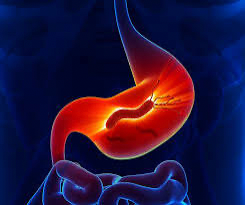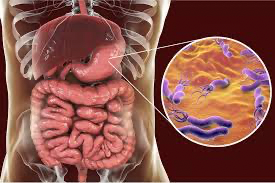Understanding Helicobacter Pylori and Its Impact on Your Health
- Carl Weston

- May 12
- 4 min read
Helicobacter pylori: A Silent Threat and the Genomic Breakthrough Unveiling Its Global Impact:
Helicobacter pylori (H. pylori) is a spiral-shaped, Gram-negative bacterium that colonizes the human stomach. Despite its prevalence—infecting over half of the global population—it often remains undetected, silently contributing to various gastrointestinal diseases. Recent advancements, particularly the comprehensive Helicobacter pylori Genome Project (HpGP), have shed light on its genetic diversity and implications for human health.
Understanding H. pylori and Its Health Implications
H. pylori has co-evolved with humans for over 100,000 years, adapting to the acidic environment of the stomach. While many carriers remain asymptomatic, the bacterium is implicated in several serious conditions:
Chronic Gastritis: Persistent inflammation of the stomach lining.
Peptic Ulcers: Sores in the stomach or upper part of the small intestine.
Gastric Cancer: H. pylori is the only confirmed bacterial carcinogen, responsible for over 850,000 new cancer cases in 2020, predominantly non-cardia gastric tumors.
MALT Lymphoma: A rare cancer affecting the stomach’s lymphoid tissue.
In Canada, H. pylori infection rates vary, with higher prevalence among Indigenous populations and immigrants from regions with elevated infection rates.
In the US 30-40% of people tested have H pylori, but belief is the numbers of asymptomic people could be as high as 80-90% of the population.
The Helicobacter pylori Genome Project: A Global Endeavor
In December 2023, an international consortium of over 250 scientists published findings from the HpGP in Nature Communications. This monumental study sequenced 1,011 H. pylori strains from individuals across 50 countries, aiming to understand the bacterium’s genetic diversity and its correlation with disease risk.
Key Findings:
Population Structure: H. pylori strains exhibit distinct genetic populations aligned with human migration patterns. For instance, strains from Northern Indigenous Americans closely resemble North Asian strains, while those from Southern Indigenous communities are more akin to East Asian strains.
Virulence Factors: A notable discovery was a North American subpopulation lacking the cag pathogenicity island, a gene cluster associated with increased virulence. This subpopulation was present in 7% of U.S. genomes studied.
Disease Association: The study reinforced the link between specific H. pylori populations and varying risks of gastric diseases, emphasizing the need for region-specific public health strategies.
Implications for Public Health and Future Research
The insights from the HpGP have profound implications:
Targeted Interventions: Understanding the genetic makeup of H. pylori strains can inform tailored treatment approaches and vaccine development, especially in high-risk populations.
Epidemiological Surveillance: The genomic data serves as a valuable resource for monitoring H. pylori’s evolution and spread, aiding in early detection and prevention strategies.
Personalized Medicine: Recognizing the genetic diversity among H. pylori strains paves the way for personalized therapeutic regimens, enhancing treatment efficacy and reducing antibiotic resistance.
Top Ways to Test for H. pylori
Accurately identifying an H. pylori infection is crucial for addressing root causes of bloating, reflux, ulcers, gastritis, and even systemic issues like fatigue or skin problems. Here are the most effective, clinically reliable testing methods:
1. GI-MAP (GI Microbial Assay Plus) by Diagnostic Solutions
Best for: Functional practitioners wanting a comprehensive view of H. pylori and the entire gut microbiome.
Key Benefits:
• Uses quantitative PCR (qPCR) DNA analysis for high sensitivity and specificity.
• Detects H. pylori and its virulence factors (like cagA, vacA, babA, oipA), which can indicate a more aggressive infection.
• Also assesses related markers: digestive enzymes (elastase), inflammation (calprotectin), and immune response (sIgA).
Why it’s superior: You get a full picture of how H. pylori may be affecting digestion, inflammation, and immune status—ideal for building a personalized protocol.
2. Urea Breath Test
Best for: Quick, non-invasive testing for active H. pylori infection.
How it works: The patient ingests urea labeled with carbon isotopes. If H. pylori is present, it breaks down the urea, releasing labeled carbon dioxide that’s measured in the breath.
Pros:
• High accuracy for detecting active infection.
• Widely available in clinics and hospitals.
Cons:
• No information about virulence.
• Doesn’t assess broader gut health or co-infections.
3. Stool Antigen Test
Best for: Detecting H. pylori antigens in stool.
Pros:
• Non-invasive and good for confirming active infection.
• Often used to monitor treatment success post-eradication.
Cons:
• Less sensitive than qPCR methods like the GI-MAP.
• Can yield false negatives if sample handling isn’t optimal.
4. Endoscopy with Biopsy (Invasive)
Best for: Severe cases where ulcers, gastric cancer, or significant damage is suspected.
Allows: Direct visualization of the stomach lining and biopsy sampling for histology, culture, or PCR.
Cons:
• Invasive, costly, and not typically necessary for mild or moderate cases.
• May miss patchy infections.
Conclusion
H. pylori remains a significant public health concern due to its widespread prevalence and association with severe gastrointestinal diseases. The Helicobacter pylori Genome Project marks a pivotal step in unraveling the bacterium’s complexities, offering hope for more effective interventions and a deeper understanding of its role in human health.For those interested in delving deeper into the study, the full publication is available in Nature Communications:
For anyone looking to test and treat from a natural way, contact me through this website or through any of my busienss social media handles. Labs are an easy way to discover the u nfderlying causes of your health and wellness. And offer an alternative to the medical system and approach,








Comments